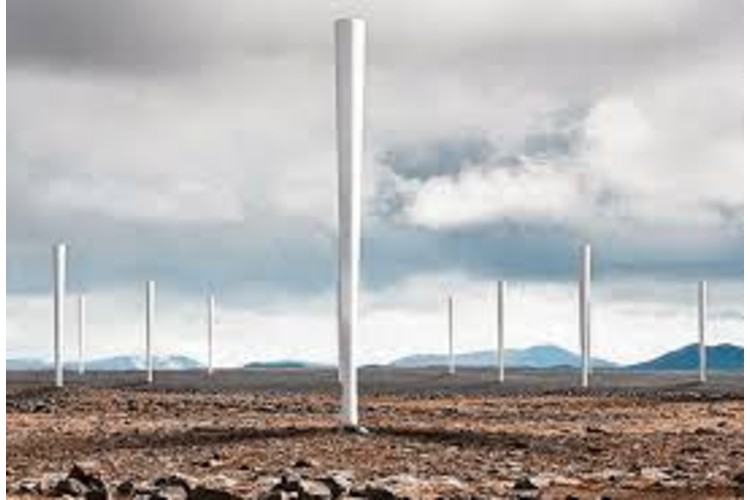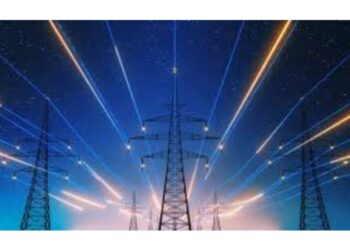The global energy landscape is undergoing a seismic shift as the world transitions from fossil fuels to renewable energy sources. Among the most promising innovations in this space is the emergence of bladeless wind turbines—a groundbreaking technology that challenges traditional wind energy systems. As the world grapples with climate change, energy security, and the need for sustainable development, bladeless wind turbines represent a significant leap forward in the renewable energy industry. This editorial explores the global industry analysis, growth potential, demand drivers, future innovations, and challenges of bladeless wind turbines, highlighting why this technology is crucial for a sustainable future.
Global Industry Analysis: A Paradigm Shift in Wind Energy
Traditional wind turbines, with their towering blades and complex mechanical systems, have dominated the wind energy sector for decades. However, these systems come with limitations, including high costs, noise pollution, and environmental concerns related to bird mortality and land use. Enter bladeless wind turbines—a disruptive innovation that addresses many of these challenges.
Bladeless wind turbines operate on the principle of vortex-induced vibrations, harnessing wind energy through oscillations rather than rotational motion. This design eliminates the need for large, rotating blades, resulting in a compact, lightweight, and visually unobtrusive system. Companies like Vortex Bladeless and others are pioneering this technology, attracting significant attention from investors, governments, and environmentalists.
According to Transparency Market Research, the global bladeless wind turbine market is poised for robust growth, driven by increasing investments in renewable energy and the need for more efficient, eco-friendly solutions. The market is expected to witness a compound annual growth rate (CAGR) of over 10% in the next decade, with North America, Europe, and Asia-Pacific leading the charge.
Growth Drivers: Why Bladeless Wind Turbines Are Gaining Traction
Several factors are fueling the adoption of bladeless wind turbines:
- Environmental Benefits: Bladeless turbines have a smaller environmental footprint compared to traditional turbines. They produce minimal noise, reduce bird fatalities, and require less land, making them ideal for urban and ecologically sensitive areas.
- Cost Efficiency: The absence of complex moving parts reduces manufacturing, installation, and maintenance costs. This makes bladeless turbines an attractive option for developing countries and small-scale applications.
- Scalability and Versatility: Bladeless turbines can be deployed in a variety of settings, from residential rooftops to remote off-grid locations. Their modular design allows for easy scaling, catering to diverse energy needs.
- Government Support and Policies: Governments worldwide are implementing policies to promote renewable energy adoption. Subsidies, tax incentives, and renewable energy targets are driving demand for innovative solutions like bladeless wind turbines.
- Public Acceptance: Traditional wind turbines often face opposition due to their visual impact and noise. Bladeless turbines, with their sleek design and quiet operation, are more likely to gain public approval, accelerating their deployment.
Future Innovations: Pushing the Boundaries of Wind Energy
The bladeless wind turbine industry is still in its nascent stages, but the potential for innovation is immense. Researchers and companies are exploring ways to enhance efficiency, durability, and energy output. Some key areas of focus include:
- Material Advancements: The development of lightweight, durable materials can improve the performance and lifespan of bladeless turbines. Nanomaterials and composites are being tested to optimize energy capture and reduce wear and tear.
- Hybrid Systems: Integrating bladeless turbines with solar panels or energy storage systems can create hybrid renewable energy solutions, ensuring a consistent power supply.
- Smart Technology: Incorporating IoT (Internet of Things) and AI (Artificial Intelligence) can enable real-time monitoring, predictive maintenance, and optimized energy generation.
- Offshore Applications: While bladeless turbines are currently more suited for onshore use, research is underway to adapt this technology for offshore environments, where wind speeds are higher and more consistent.
- Energy Storage Integration: Pairing bladeless turbines with advanced energy storage systems can address the intermittency of wind energy, making it a more reliable power source.
Challenges: Overcoming Barriers to Adoption
Despite their promise, bladeless wind turbines face several challenges that must be addressed to achieve widespread adoption:
- Energy Efficiency: Current bladeless turbine models generate less energy compared to traditional turbines. Improving energy conversion efficiency is critical to competing with established wind energy systems.
- Technological Maturity: As a relatively new technology, bladeless turbines require further research and development to prove their long-term viability and reliability.
- Market Competition: The renewable energy market is highly competitive, with solar, hydro, and traditional wind energy dominating the landscape. Bladeless turbines must demonstrate clear advantages to gain market share.
- Regulatory Hurdles: Navigating complex regulatory frameworks and obtaining necessary permits can delay the deployment of bladeless turbines.
- Public Awareness: Many consumers and businesses are unaware of bladeless wind turbines and their benefits. Increased awareness and education are essential to drive demand.
Why Bladeless Wind Turbines Are Important
The importance of bladeless wind turbines extends beyond their technical innovations. They represent a shift toward more sustainable, inclusive, and efficient energy systems. By addressing the limitations of traditional wind turbines, bladeless technology has the potential to democratize access to renewable energy, particularly in underserved regions.
Moreover, bladeless wind turbines align with global climate goals, such as the Paris Agreement, by reducing greenhouse gas emissions and promoting clean energy. They also contribute to energy independence, reducing reliance on fossil fuels and enhancing energy security.
A Bright Future for Bladeless Wind Turbines
The bladeless wind turbine industry is at the forefront of renewable energy innovation, offering a compelling alternative to traditional wind energy systems. While challenges remain, the potential for growth and impact is undeniable. As governments, businesses, and consumers increasingly prioritize sustainability, bladeless wind turbines are poised to play a pivotal role in shaping the future of energy.
The journey toward a cleaner, greener planet requires bold ideas and transformative technologies. Bladeless wind turbines are a testament to human ingenuity and our collective commitment to building a sustainable future. As the industry evolves, collaboration among stakeholders—researchers, policymakers, investors, and the public—will be key to unlocking the full potential of this revolutionary technology.












